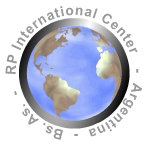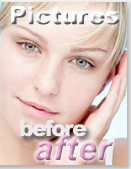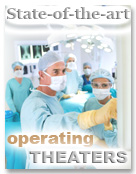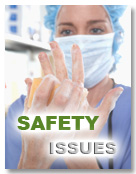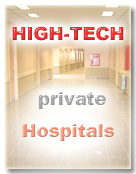
- RP Specialized in:
- Plastic Surgery in Argentina
- Treatments
- Breast Implant Surgery
- Rhinoplasty
- Vaser® Lipo System
- Liposuction
- Eyelid Surgery
- Tummy Tuck
- Breast Lift
- Facelift
- Lifting the Tip of the Nose
- Breast Reduction
- Double Chin Surgery
- Eye Shaping Surgery
- Chin Augmentation
- Ear Surgery
- Mentoplasty
- Eyebrow Lift
- Mini Facelift
- Cantopexy
- Deep Chemical Peel - Resurfacing
- Plastic Surgery Information
- Plastic Surgery Costs
- Cosmetic Procedures
- Hair Transplant
- Dermatology
- Phlebology
- Related information
- Related Links
- Web Directories
- Free Quotation
- Webmaster
» Rhinoplasty, nose surgery in Argentina
Table of Contents:
- » Pictures Before and After
- » General Information: risks, anesthesia, recovery, pre-operative tests, etc.
- » How to get a quote - Photographs necessary - Requirements.
» General Information: risks, anesthesia, recovery, pre-operative tests:
Who are the best candidates for Rhinoplasty?
NATURAL RESULTS
+
OPERATING THEATERS
IN LARGE HIGH
COMPLEXITY CLINICS
The best candidates for rhinoplasty are those who want to improve rather than perfect their looks. If you are physically healthy, psychologically stable and have realistic expectations, you are eligible for rhinoplasty. It can enhance your appearance and self-confidence, but will not necessarily change your looks to match your ideal or cause other people to treat you differently. More often than not the surgeon will recommend chin surgery to those people willing to have a rhinoplasty to achieve an even face, since the size of the chin may decrease or increase the perceived size of the nose.
What is a Rhinoplasty like and what is it for?
Rhinoplasty is a surgery to reshape the nose. It can reduce or increase its size, reshape the tip or septum of the nose, lift the nose, readjust the opening of the nostrils or change the angle between the nose and the upper lip. It may also correct a birth defect or injury, or help relieve some breathing problems. At the meeting with Dr. Rosso, the patient explains what she/he does not like about his/her nose, either the hump, the tip, alar bases etc. The experienced surgeon will focus on meeting the patient’s needs as much as she can and to guide him/her based on her professional criteria and esthetic sensitivity. Besides, she will adapt the patients’ needs according to genre, age and skin features. Our goal is to achieve a nose that looks as natural as possible.... "When nobody can tell a rhinoplasty was performed and the reshaped nose is pleasant to the sight, that is a well done work." This is the philosophy of our work: natural results and patients' satisfaction.
What is Rhinoplasty like?
During the surgery, the nasal skin is separated from its supporting framework of bone and cartilage, which is then sculpted to the desired shape. Finally, the nasal skin is redraped over the new framework.
Incisions are inconspicuous since they are made inside the nose. After surgery, a splint is placed to help the nose maintain its new shape. Nasal packs or soft plastic splints may also be placed in your nostrils to stabilize the septum, the dividing wall between the air passages. In most of the cases rhinoplasty does not require hospitalization.
Are there any risks? Which complications may arise?
All surgeries involve Risks:
By giving you all the information you need to make a decision, including information on the risks involved, we show our respect for you and allow you to have the last say in all matters concerning your surgery. We also believe that this speaks volumes about RP Medical Center, about who we are and how we work. It is our responsibility to provide you with all necessary information. We consider that Quality goes hand-in-hand with Responsibility. All patients have a right to be explained how the surgical procedure will be performed, together with the potential risks and complications (which are not caused by a Physician's errors or malpractice, but which derive from the surgery itself or cannot be anticipated), and the advantages and disadvantages of certain techniques, so that they can think it over and make a balance before making any final decision.
Any surgical procedure has risks (whether an optional surgery, which you choose to undergo, or an emergency surgery); some risks are common to all surgical procedures and others are specific to each type of surgery. No surgery is exempt from risk. A plastic surgery is, after all, a surgery. Risks (each under different incidence percentages; see below) range from post-surgery complications which can be secondarily solved (bad scarring, seroma, skin necrosis, etc.) to severe and fatal complications such as reactions to anesthesia, pulmonary embolism (blood clots or "small blood balls" which could migrate to the heart and block the pulmonary artery causing severe injuries or even death), among others.
In 1997, the results of a survey were disclosed in the United States, based on 400,675 surgical procedures involving Plastic Surgery and Surgical Repair, where 7 deaths were found. The rate of severe complications (hypotension, hematoma, infection, hypertension episodes, sepsis) was 0.47% (1 case every 230 patients). One death occurred every 57,000 patients, that is, a mortality rate of 0.0017%; slightly less than 1 death every 57,000 patients. The survey documented the approximate safety level for plastic surgeries conducted by certified plastic surgeons in authorized facilities in the US, during those years. Another survey conducted in the United States (from 1994 through 1998) further accounted for deaths occurred after Liposuctions. Survey findings reported one death every 5,000 patients, which represents a mortality rate of 0.02 % and 20 deaths every 100,000 liposuctions. The main cause of death was pulmonary thromboembolism.
In approximately one out of ten rhinoplasty cases, a second procedure might be required, for instance, to correct a minor deformity. Such cases are not predictable and they occur even in patients of the best surgeons. In general, the second corrective surgery is a minor one.
Risks must be minimized by taking all appropriate preventive measures and complying with certain rules and requirements, including the requirement for pre-surgery tests, pre-operative and post-operative indications, the practice of surgeries in the proper facilities (which must be fully-equipped to cope with any inconveniences), patients' full medical history, and their compliance with the Physicians' guidelines after the surgery. It should be recalled that complications and risks may arise even where all precautions were taken and even if the patient is healthy. Given that these complications are not predictable, they may affect the patients of even the best surgeons in any country of the world, despite any precautions taken to reduce potential risks.
What kind of anesthesia we use?
Rhinoplasty can be performed under local anesthesia combined with a sedative or under general anesthesia, so that the patient's face will be insensitive to pain while fully awake when the surgery ends.
What precautions should I take after surgery? When can I go back to normal life?
After care
After the surgery a nasal plaster cast is placed. Bruising on eyelids for an average from 5 to 15 days is normal depending on the surgery and the patient’s sensitivity. Partial rest is prescribed during the first 48 hours following surgery, and it is advisable to sleep with your head raised to a higher position than your chest (partially sitting position) to avoid major facial swelling. In general, post-operative period is not painful. The plaster cast is removed between the 5th and 7th day, and paper tapes are left for several more days. Edema (or swelling) is normal but significant during the first month, although the results can be noticed. Generally speaking, nasal swelling after rhinoplasty takes 6 months to subside completely.
Most of the patients can go back to normal activity after 2-3 days. As for medical leave, once the plaster cast is removed you can go back to work as long as no strenuous activity is done (for instance, avoid weight lifting and bending your head). Immediately after rhinoplasty, it is of the utmost importance to prescribe clearly the position of the head. Avoid direct sun exposure for 2 months after surgery. Avoid strenuous activities that increase your blood pressure such as exercising, aerobics, swimming and others which can hit your nose or cause trauma. Do not rest glasses on your nose.
What are the expected results?
Results are noticeable within 14 days, although the nose and lip may present edema. For instance, a straight nasal dorsum will replace the hump, if any.
If I do not live in the City of Buenos Aires: How long should I stay approximately?
You will need to stay in Buenos Aires for 8 nights and 9 days. One month after surgery, you must schedule a follow-up visit in your city of residence if you like.
Which are the required pre-surgical tests?
It is necessary to undergo the following pre-surgical tests within 1 month before the date of surgery:
- I. Blood test: hemogram, blood sugar, creatinin, hepatogram, clotting time, serology HIV
- II. Cardiology: ECG and surgical risk.
Mandatory pre-surgical instructions:
- Put off smoking 1 month in advance (all smoking patients have an increased risk of skin suffering in the area being operated on and of a delayed healing of scars).
- Discontinue Aspirin intake (Acetyl salicylic acid) 1 month in advance.
- Discontinue Vitamin E intake 1 month in advance.
- Apply anti tetanus vaccine.
- Anticoagulated Patients: Consult your hematologist to change treatment schedule
» How to get a quote – Photographs necessary to undergo a surgery – Stay – Requirements:
» To request the right quote and provide all necessary information, go to: "How to travel to undergo a surgery", and read "Step No. 1", "Make arrangements for a surgery by following these easy steps".
» Photographs required for Rhinoplasty: Please send 5 pictures of your face: 1 frontal photograph, 1 profile photograph of each side and 1 3/4 profile photograph of each side. It is important that pictures show the head and neck completely.
» Days of stay for Rhinoplasty: 8 nights, 9 days. For further information on stay days, minimum stay, and schedule, among other matters, go to "How to travel to undergo a surgery" , read "Step No. 3", " Make arrangements for a surgery by following these easy steps."
» Hospitalization: Not required. After the surgery, a 4-hour recovery period at the clinic is required. You may then move to your place of accommodation.
» Why are photographs necessary?
Not only are photographs necessary to avoid paying for an unnecessary and more expensive surgical procedure, but also to determine whether the surgery for which you have come to us is the best type of surgery for you. Photographs are essential for our Physicians to analyze your case, to know how to proceed and offer you the personalized treatment that sets us apart. Your photographs also enable us to make a more precise quote.

